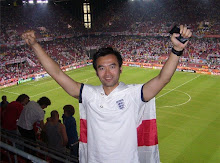If there’s one thing I‘ve learned about treating complex medical conditions, it’s that you can’t take anything for granted. This has been true of my treatment, right up to my most recent, unscheduled surgery on New Years Eve.
The shunt which was installed in my head just a few weeks prior, had blocked, causing a flare-up of the hydrocephalus that had given me all those weird problems back in November.
Blockages happen when the random bits of junk floating around in the brain, clog up the drainage holes in the shunt. The standard fix for this is a “shunt revision” – where they go back in to replace or unblock the shunt. But in my case the blockage had happened so quickly (I guess I have more junk in my brain than most) that Prof. Poon was concerned a simple revision would not be the best long-term solution. So, to minimise the chances of having to do multiple corrective surgeries in the future, he suggested another approach called “Fenestration”.
Fenestration literally means “to make windows”. In this context, the “window” was to be a hole in the wall of the swollen ventricle in my brain. This hole would provide an outlet for excess fluid to drain off harmlessly into the main brain cavity.
The upside of this approach is that if successful, it sidesteps the need for a shunt altogether, so there’s nothing to get blocked in the future. The downside (and the reason it wasn’t the recommended solution from day one) is that it’s a much more delicate and complicated surgical procedure than installing a shunt. Fenestration is a highly invasive surgery and therefore also higher risk. However, I had trusted the Professor’s judgement and skills on these matters thus far and I wasn’t about to challenge him now, so I just took a big gulp and said “Sure, whatever you say doc”.
Complications
The operation was supposed to take roughly an hour using microsurgery. However, as I understand it, they had some complications mid-operation. They couldn’t punch a large enough hole in the ventricle wall using microsurgery and ended up switching to traditional open surgery to get the job finished. The thought of anything not going according to plan when your (my) head is opened up on a surgery table is quite frightening. But, I’m still here and right now I feel fine. As it happens, the op ended up taking 5 hours instead of one, so I guess I should see that as a bonus (buy 1 get 4 free anyone?).
Recovery
The post-op symptoms were very similar to the ones I felt after my first tumour surgery (see my post: “Seven Days of Pain” on August 31st). Again, I woke up in intensive care on drips with a plastic tube coming out of the back of my head. But the one big difference was that the recovery time was faster this time around. After my first surgery, it took more than a week for the headaches to ease up. This time, I could feel improvements by day 3. Also, the vomiting stopped after a couple of days, which was a huge relief not just to me, but also to the poor nurses cleaning up after me (sorry ladies).
Not Quite The New Year I Was Planning
I spent New Years Eve in the intensive care unit and then my first days of 2010 in HDU (High Dependency Unit) before being allowed back to the regular ward, where I remain now. When I was in HDU, I had splitting headaches, vomiting, diarrhoea and suspected infection. Now my main complaint is boredom and that my friends is a far nicer thing to be complaining about =)


You always have extraordinary journey, same as your brain surgery...
ReplyDeleteWhen will the doc open the window for you?
Let us know if you feel too bored, we can always come to annoy you! =)